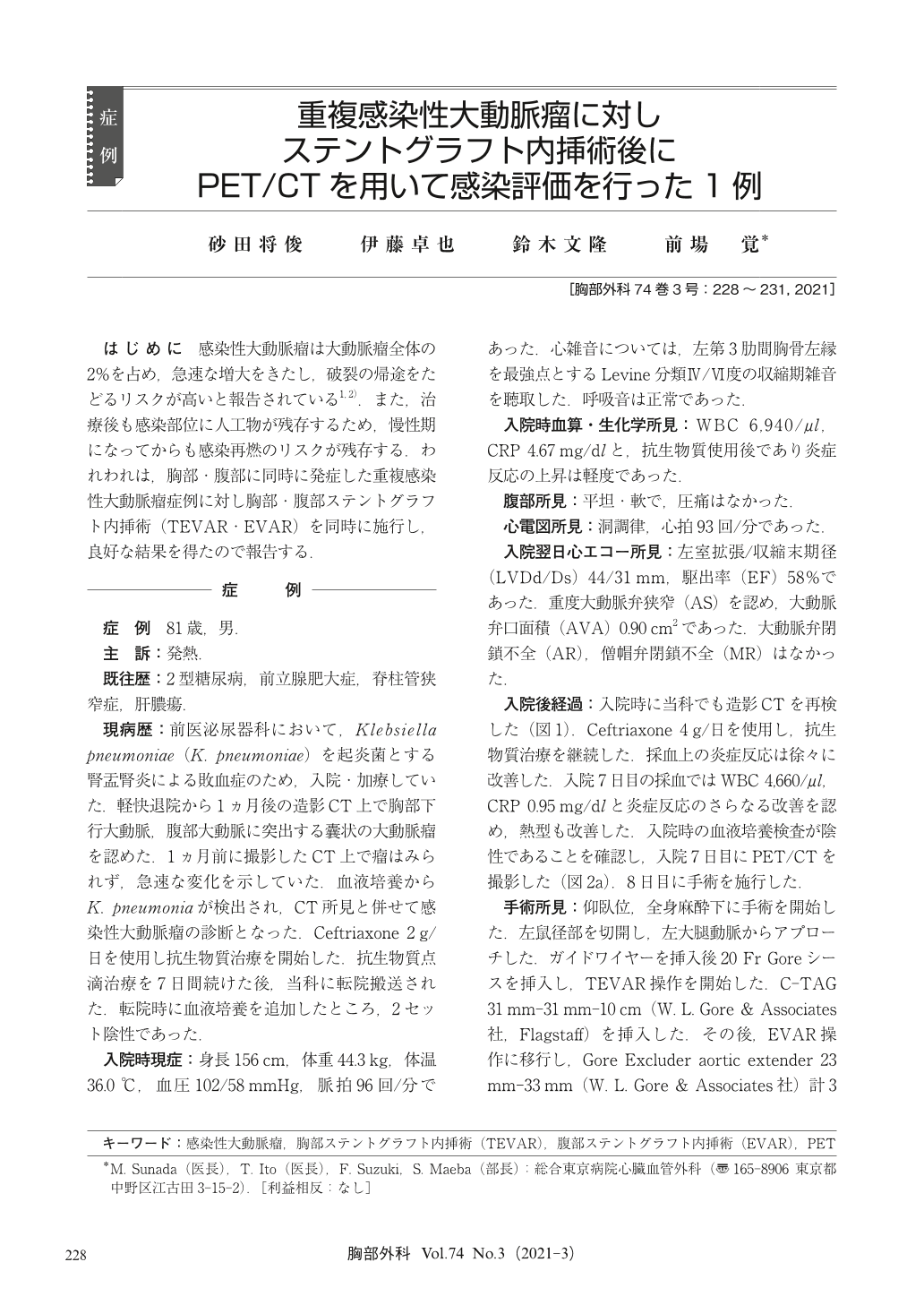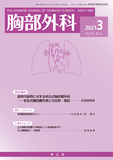Japanese
English
- 有料閲覧
- Abstract 文献概要
- 1ページ目 Look Inside
- 参考文献 Reference
はじめに 感染性大動脈瘤は大動脈瘤全体の2%を占め,急速な増大をきたし,破裂の帰途をたどるリスクが高いと報告されている1,2).また,治療後も感染部位に人工物が残存するため,慢性期になってからも感染再燃のリスクが残存する.われわれは,胸部・腹部に同時に発症した重複感染性大動脈瘤症例に対し胸部・腹部ステントグラフト内挿術(TEVAR・EVAR)を同時に施行し,良好な結果を得たので報告する.
An 81-year-old male was referred to our institute. His chief complaint was high fever. Computed tomography (CT) angiography demonstrated newly saccular aortic aneurysms at both thoracic and abdominal aorta. We used intravenous antibiotics (ceftriaxone 4 g/day) for seven days. Positron emission tomography (PET)/CT showed active inflammation sign at both chest and abdominal aneurysms. Open surgery for double aortic aneurysms seemed too invasive because of his past medical history. At eighth day after admission, we performed thoracic endovascular aortic repair (TEVAR) and endovascular aortic repair (EVAR) for preventing rupture of aortic aneurysms. After surgery, we continued intravenous antibiotics (ceftriaxone 4 g/day) for 15 days. We changed intravenous antibiotics to oral antibiotics (levofloxacin 500 mg/day). The postoperative course was uneventful. He was discharged at 19th day after surgery. Since surgery, no symptoms of reinfection have been observed at outpatient clinic. PET/CT was useful to evaluate the control of local infection in this case.

© Nankodo Co., Ltd., 2021


